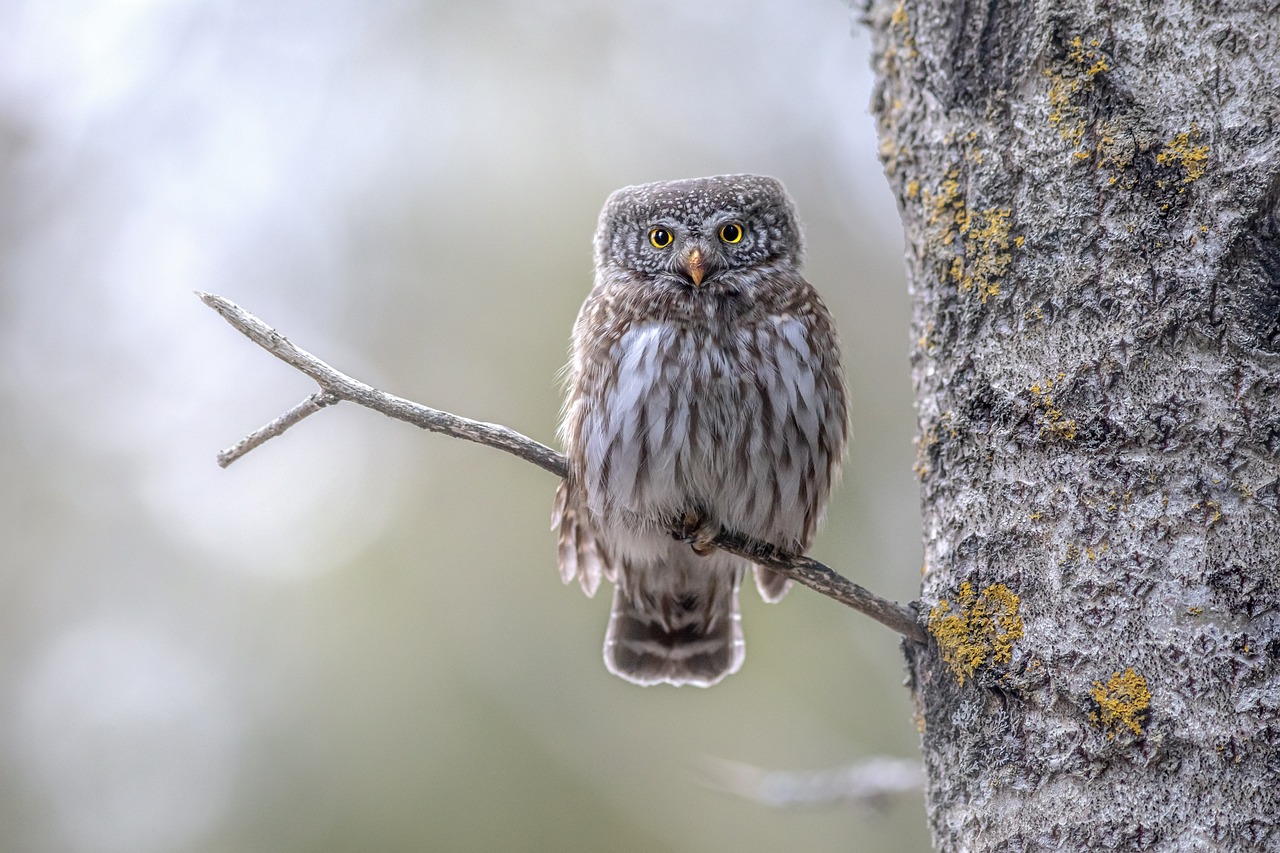The Eurasian Pygmy Owl (Glaucidium passerinum) is a small owl species found in Europe and Asia. Here are some key features and characteristics of the Eurasian Pygmy Owl:
- Size: The Eurasian Pygmy Owl is one of the smallest owl species, measuring around 16 to 19 centimeters (6.3 to 7.5 inches) in length. Despite its small size, it has a robust build with a rounded head and short tail.
- Appearance: This owl species has a distinctive appearance characterized by its compact body, large yellow eyes, and prominent facial disk. It has a brown or reddish-brown plumage with white spotting or streaking on the upperparts and a pale underside. Its plumage provides excellent camouflage against tree bark.
- Habitat: Eurasian Pygmy Owls inhabit a variety of forested habitats, including coniferous and mixed forests, woodlands, and sometimes urban parks and gardens. They prefer areas with dense vegetation and ample prey availability.
- Range: The Eurasian Pygmy Owl’s range extends across Europe and Asia, including Scandinavia, the Baltic states, Russia, Siberia, Central Asia, and parts of China. It is a resident species in many regions but may undertake seasonal movements or migrations in response to changes in prey availability or weather conditions.
- Behavior: Despite its small size, the Eurasian Pygmy Owl is a skilled hunter, preying on small birds, mammals, insects, and occasionally small reptiles. It hunts primarily during the day, using a sit-and-wait strategy to ambush prey from perches or by actively searching through vegetation. Its flight is swift and agile, allowing it to navigate through dense forest habitats with ease.
- Reproduction: Eurasian Pygmy Owls typically nest in tree cavities or abandoned woodpecker holes, although they may also use nest boxes or artificial structures. They lay a clutch of around 3 to 7 eggs, which are incubated primarily by the female for approximately 28 to 30 days. Both parents participate in feeding and caring for the young owlets until they fledge and become independent.
- Conservation: The Eurasian Pygmy Owl is generally not considered globally threatened, although local populations may face threats from habitat loss, fragmentation, and human disturbance. Conservation efforts focus on habitat protection, sustainable forestry practices, and raising awareness about the importance of preserving forest ecosystems.
Overall, the Eurasian Pygmy Owl is a fascinating and charismatic owl species known for its small size, adaptability to various habitats, and predatory prowess despite its diminutive stature.
Views: 20
Subscribe to the newsletter:
